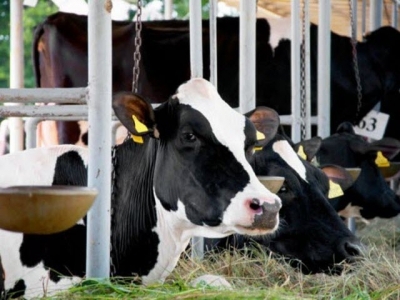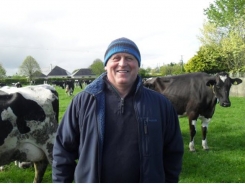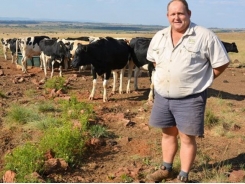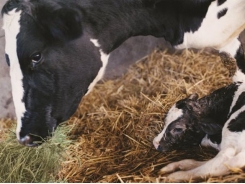Act early to reduce dairy cow heat stress

With high temperatures set to continue, dairy farmers need to be alert to the signs of heat stress in their cows.
Cows become affected by heat stress when temperatures reach just 20C and it can lead to reduced milk yields as a result of depression of feed intakes.
Cows at grass are at particularly high risk of heat stress, says Adam Clay, ruminant manager with Trouw Nutrition GB.
"Last year we saw depressions in milk yield, milk quality and pregnancy rates when climatic conditions induced heat stress, reducing margins and potentially profits," Mr Clay recalls.
"Visible symptoms of heat stress include more rapid respiration rate and panting, lethargy, reduced feed intake and rumination and lower yields. When stressed, respiration rate can increase to 35-60 breaths a minute, roughly twice the normal rate," explains Mr Clay.
Mr Clay says heat-stressed cows also exhibit changes in rumen function, with less frequent cud chewing and reduced saliva production. These factors increase the risk of acidosis by disrupting the usual rumen-buffering effect of rumination.
Prevention and treatment
Dairy farmers must act promptly to treat the first signs of heat stress, as the rumen can take a long time to adjust, which means the effects can be seen long after temperatures go down.
Adding rumen buffers and yeasts to the diet can help offset acidosis risk and promote better intakes, Mr Clay says. Cows suffering heat stress should also be fed less forage, he adds.
"Forages are actually a source of considerable heat production in the rumen, which can exaggerate the effect of heat stress. Their fermentation produces seven times more heat than concentrates, so in heat stress conditions it will pay to reduce forages and increase concentrates, particularly high-fibre concentrates.
"This also has the effect of increasing energy density, which will help offset reduced energy intakes due to lower dry matter intakes.
"Also make sure cows have access to plenty of clean, fresh water, as when thirsty water intakes will increase markedly. This problem will be worse when forages are reduced."
Three top tips to reduce heat stress
- Add rumen buffers and yeasts to the diet to increase intakes and prevent acidosis
- Feed less forage in the diet, as forages can cause heat production in the rumen
- Make sure cows have access to fresh, clean water. High yielders can drink up to 150 litres of water a day in hot weather
Có thể bạn quan tâm
Phần mềm

Phối trộn thức ăn chăn nuôi

Pha dung dịch thủy canh

Định mức cho tôm ăn

Phối trộn phân bón NPK

Xác định tỷ lệ tôm sống

Chuyển đổi đơn vị phân bón

Xác định công suất sục khí

Chuyển đổi đơn vị tôm

Tính diện tích nhà kính

Tính thể tích ao hồ



 Livability calves of dairy heifers
Livability calves of dairy heifers  Liver health is crucial during the transition period
Liver health is crucial during the transition period